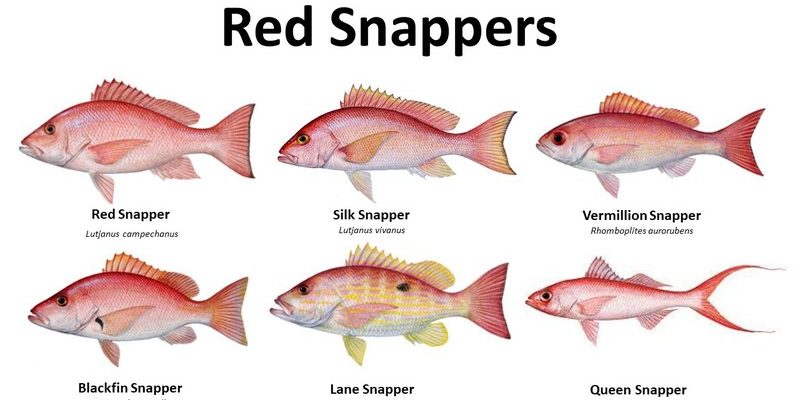![Snapper Vs. [Similar Species] - Key Differences](https://gudri.com/wp-content/uploads/2025/06/Snapper_Vs___Similar_Species______Key_Differences_image_0.jpg)
Think of snapper and grouper as two siblings in the ocean. They share some family traits, like being versatile and tasty, but they also have their own distinct personalities. Snapper, with its vibrant pinkish-red color, can be a real showstopper on your plate. In contrast, grouper tends to have a more muted hue, usually with a mix of browns and greens that helps it blend into rocky seafloors. Now, let’s get into the nitty-gritty of what sets these fish apart.
Physical Differences Between Snapper and Grouper
At first glance, identifying snapper and grouper can be tricky. They’re both chunky fish, but there are some telltale signs.
Snapper typically has a sleeker profile. Its body is elongated, and its head is somewhat pointed. You can also spot them by their bright, shiny skin that can range from pink to red, sometimes even featuring yellow or blue stripes.
Grouper, on the other hand, has a more robust and stocky body. Their heads are larger and fatter, giving them a more beefy appearance. Grouper colors can vary widely—some are brown, others green or even bright blue. This can help them camouflage among rocks or coral reefs.
When cooking, you might notice these differences in texture. Snapper has a flakier, more delicate meat, whereas grouper’s flesh tends to be thicker and firmer. Imagine using snapper for a light, zesty ceviche, while grouper might shine in a heartier fish taco.
Taste and Cooking Styles
Taste is where both snapper and grouper really shine, but they each bring their own flair to the table.
Snapper is known for its mild, slightly sweet flavor. This makes it quite versatile. You can grill it, bake it, or even fry it. A simple marinade of olive oil, lemon, and herbs lets its natural flavors shine. Honestly, snapper’s delicate taste pairs beautifully with bright, fresh ingredients, making it perfect for a summer dish.
On the contrary, grouper offers a slightly stronger flavor. It’s often described as meatier and richer. This makes it an excellent choice for heartier recipes like chowders or stews. Grouper holds up well to bold ingredients, like heavy spices or rich sauces. So, if you’re planning on making a spicy fish curry, grouper could be your go-to choice.
Health Benefits of Snapper and Grouper
When considering health benefits, both snapper and grouper pack a nutritional punch. They are both excellent sources of lean protein, which is fantastic for muscle repair and weight management.
Snapper is particularly rich in omega-3 fatty acids, which are known for their heart health benefits. These fats can reduce inflammation and are great for brain function. Additionally, snapper is a good source of vitamins B12 and D, which support energy and bone health.
Grouper also has a healthy profile. It’s lower in calories and fat compared to some other fish, making it a healthy choice. Like snapper, grouper contains omega-3s, but it’s also loaded with selenium, an important mineral for thyroid function and antioxidant defense. So, whether you go for snapper or grouper, you really can’t go wrong!
Habitat and Fishing Practices
Let’s talk about where these fish come from. Snapper and grouper have different habitats that influence their availability and sustainability.
Snapper often inhabit the warmer waters of the Atlantic, Indian, and Pacific Oceans. They prefer rocky bottoms and coral reefs. This makes them popular among both commercial and recreational anglers. Overfishing has been a concern for some snapper species, so it’s essential to check where your fish comes from to ensure it’s sustainably sourced.
Grouper, meanwhile, tend to live in deeper waters. They often hide among reefs and rocky areas, making them a bit tricky to catch. Because of their habitat, grouper can be more susceptible to overfishing as well. If you’re looking to enjoy grouper, consider supporting local fisheries that practice responsible harvesting.
Price Point: Is There a Difference?
If you’ve ever shopped for seafood, you might have noticed that snapper and grouper can have different price tags. Typically, snapper tends to be on the higher end of the price spectrum. This is partially due to its popularity and the demand for its bright, appealing meat.
On the other hand, grouper can vary in price depending on the species and where you buy it. Some types can be quite affordable, while others, especially the popular red grouper, might command a higher price. When shopping, keep an eye on what’s in season and consider checking local fish markets where you might find fresher options at better prices.
So, which fish should you choose? It really depends on what you’re in the mood for! If you want something delicate and mild, go for snapper. It’s perfect for light dishes that let the fish’s flavors shine. If you’re looking for something a bit heartier with a robust flavor, grouper is your best bet.
Both have their own unique benefits, whether it’s health perks, cooking styles, or availability. Understanding the differences can enhance your culinary experience. So next time you’re at the seafood counter, take a moment to think about what fits best for your meal. Happy cooking!

